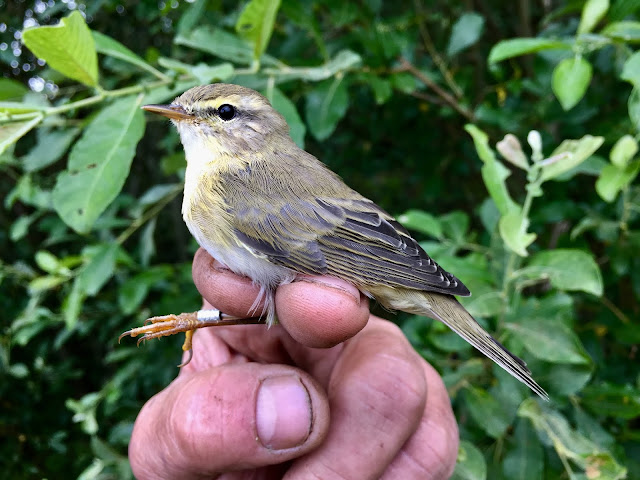Over the last 4 nights, Tony and myself (with help from Silvia, Ben, Paul Roughley and Paul Ashworth) have gone to one of our regular wader ringing sites on the west coast to trap and colour-ring, migrating Dunlin as they are pushed up the beach during the high tides. Although the tides weren't as high as we'd have like, and the added disturbance from the full moon, we actually managed to trap a good number of birds. A total of 302 new Dunlin were ringed. We also added colour-rings to a Portuguese and a Norwegian ringed bird, plus a bird that we caught back in 2015 (this was before we started colour-ringing them). We also caught a Spanish-ringed Dunlin that already had it's own set of colour-rings.
(the Portuguese-ringed Dunlin with it's new colour rings)
Given
the current number of re-sightings of our colour-ringed Dunlin, I'm
hopeful that we will soon have some reports of these birds as they
continue to head south for the winter.
As well as the Dunlin, there were a few other species using the area as a migration stop-off point. Other birds trapped and ringed were 1 Skylark, 1 Common Sandpiper, 8 Sanderling, 26 Turnstone, 17 Ringed Plover and 14 Knot.
(One of the Knots that was trapped and ringed - all were Juveniles)





